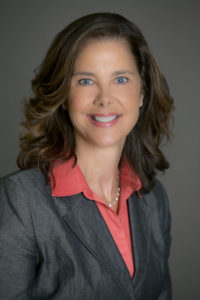GEA speaks of improving plant efficiency, reducing carbon emissions
DUESSELDORF, Germany, 12 February 2021: Potential energy savings of up to 30% and a significant reduction in CO2 emissions by as much as 90% or even 100% – that’s what its Sustainable Energy Solutions (SEnS), which integrates processes and utilities (refrigeration and heating) solutions, can help in developing optimisation strategies for customers in diverse industries, GEA said through a Press release. Numerous successfully completed SEnS projects from GEA show that these optimisations reduce the customer’s energy footprint and running costs, without compromising output or the bottom line, GEA added.

Kai Becker
Source: GEA
According to the United Nations, energy efficiency offers a potential 40% of the emission reductions required to help meet global climate goals, GEA pointed out. Due to a growing number of rules and regulations and its own climate targets, there is an absolute need for the industry to reduce its carbon footprint and become more energy-efficient, overall, it said. With cooling and heating traditionally accounting for anywhere between 50% and 90% of a plant’s entire energy consumption, it’s the ideal starting point for GEA’s SEnS initiative, it added.
GEA said its SEnS offering is a culmination of a broad processing portfolio and years of industry know-how, combined with extensive refrigeration expertise. “SEnS supports customers in the food processing, dairy and beverage industries, helping them achieve their climate goals by making them more sustainable,” said Kai Becker, CEO, Refrigeration Technology Division, GEA. As a global industrial technology provider, GEA said, it will continue to strengthen its SEnS offering in 2021. Using the SEnS approach, GEA said it will promote the increased adoption of sustainable solutions, which drive down energy consumption and reduce carbon emissions while helping customers from diverse industry sectors slash their operational costs.

Ulrich Walk
Source: GEA
Ulrich Walk, Chief Service Officer (CSO) – Refrigeration Technologies, said: “GEA has developed a structured holistic and proven approach that begins with analysing the customer’s precise energy requirements, then making process optimizations and including utilities in the equation. By connecting heat pump technology to manufacturing processes, the GEA experts ensure energy is moving circularly, rather than being wasted.”
According to GEA, each SEnS project includes a single point of contact, enabling customers to achieve genuine and proven reductions in energy consumption and their carbon footprint. The SEnS process, the company said, is backed up by a cross-functional engineering team, with experts from dairy, food or beverage processing, as required, as well as team members with refrigeration (heating & cooling) expertise in diverse processing industries. Each project, it added, considers the customer’s business parameters and ambitions, formulated as measurable KPIs, against which the installation must deliver.
Deciphering the dynamics of The Water Hub
Could you highlight how the drought situation drove Emory to develop The Water Hub?
The Water Hub was a concept my colleagues learnt about at a conference approximately 8-9 years ago. At the time, the technology was deployed in Europe but not in the United States. At the time, even Atlanta was going through heavy drought, and so we pursued the technology, which was put through various capital-funding concepts. Initially, a third-party actually funded, maintained and operated the facility. The water extracts were redistributed through the plants, and the contract was eventually signed in 2013, after which the facility came online in early 2015. In addition, the wastewater treated at the plant meets very high cleanliness standards – so much so that the water can be released back into the creek.
The Water Hub meets almost 100% of the water requirements of the campus’ utility systems, including Emory’s chilled water plants and the central campus steam plant, which provide cooling and heating to over 70 buildings. What is the capacity of the District Energy plants?
The Water Hub can clean up to 400,000 gallons of water per day, and we maximise the volume during our summer cooling period. We have around 20,000-25,000 tonnes of cooling capacity, so we are able to make up the cooling capacity with the volume of water.
The Water Hub, as we understand it, provides a low-energy, high-efficiency cleaning process through filtration, circulation through natural earth and plant bioreactors, and exposure to ultraviolet light and chlorination. How much is the energy cost?
In the locale where we are, our water is sent downstream to a very large water treatment plant, where it would be treated, redistributed and then pumped back into the system. Similar to power and when you have energy-redistributed resources, so we have to pump and process close to where the demand is and we don’t have the distribution losses or the energy needed to pump the clean water back to us or to pump the waste down to the treatment plant. So, the numbers aren’t as transparent as we’d like them to be, but we do know that it is saving energy, because we are only pumping it within our campus.
Could you elaborate on the challenges with regard to achieving operational efficiencies?
One of the things we found out early on was that there are a lot of different things in the sanitary waste stream. We found that one of the research departments was dumping animal beddings into the sewer system, and it was creating problems at the pump intakes. As a result, they had to keep cleaning the pumps and pulling them out. We then asked them to compost the animal beddings, which was a better way to dispose them. It has really given us a crude understanding of what’s in the system, and presently we have an issue where they have found baby wipes in the system. This is a major challenge in terms of what’s plugging the intakes. When you are not in the business, you don’t think about these things. We did not anticipate all this, and now we have installed filtering devices on the front end.
How were you able to reduce carbon emissions with regard to water use on campus?
Well, I think it goes back to discharging and reusing our own water. Now, we are not relying on pumping water from a distance. We also installed solar panels at the facility, so they are helping set the electrical use at the water plant.

Joan Kowal, Senior Director, Energy & Utilities, Emory University
Does the water need to be polished before deploying it as makeup water for the campus chilled-water system?
We have polishers at our steam plant, but we don’t have them at our cooling towers. However, we did have to modify our chemical treatment programme at the cooling towers. Modify in the sense that the original chemistry was based on the quality of the water. So, we had to reduce some and add others, while adjusting the menu of chemicals used.
What happens to the blowdown water? Where does it go?
When water is brought to the cooling tower, it rejects the heat from the chilled water system, and as you reject the heat you see a steam mist coming from the top. The evaporation of water causes a concentrated mix of chemicals left in the basin of the cooling tower. When the chemicals concentrate and get to a point that is high, you then have to get the valve and blow down the water. It is then closed and refilled with non-chemically treated water. We operate in 7-8 cycles of blowing down water, which then goes back to the Hub and mingles with the rest of the water. The rest goes back out to a different part of the sanitary system.
What has been the overall response to The Water Hub? Also, are there any additional challenges with regard to odour?
There are people interested who want to replicate what we have. We were very stringent with our developer, when it comes to smell. There shouldn’t be an odour, and it is located right near residential facilities and offices. The technology we use is such that you don’t have the build-up of gases to create the smell.


